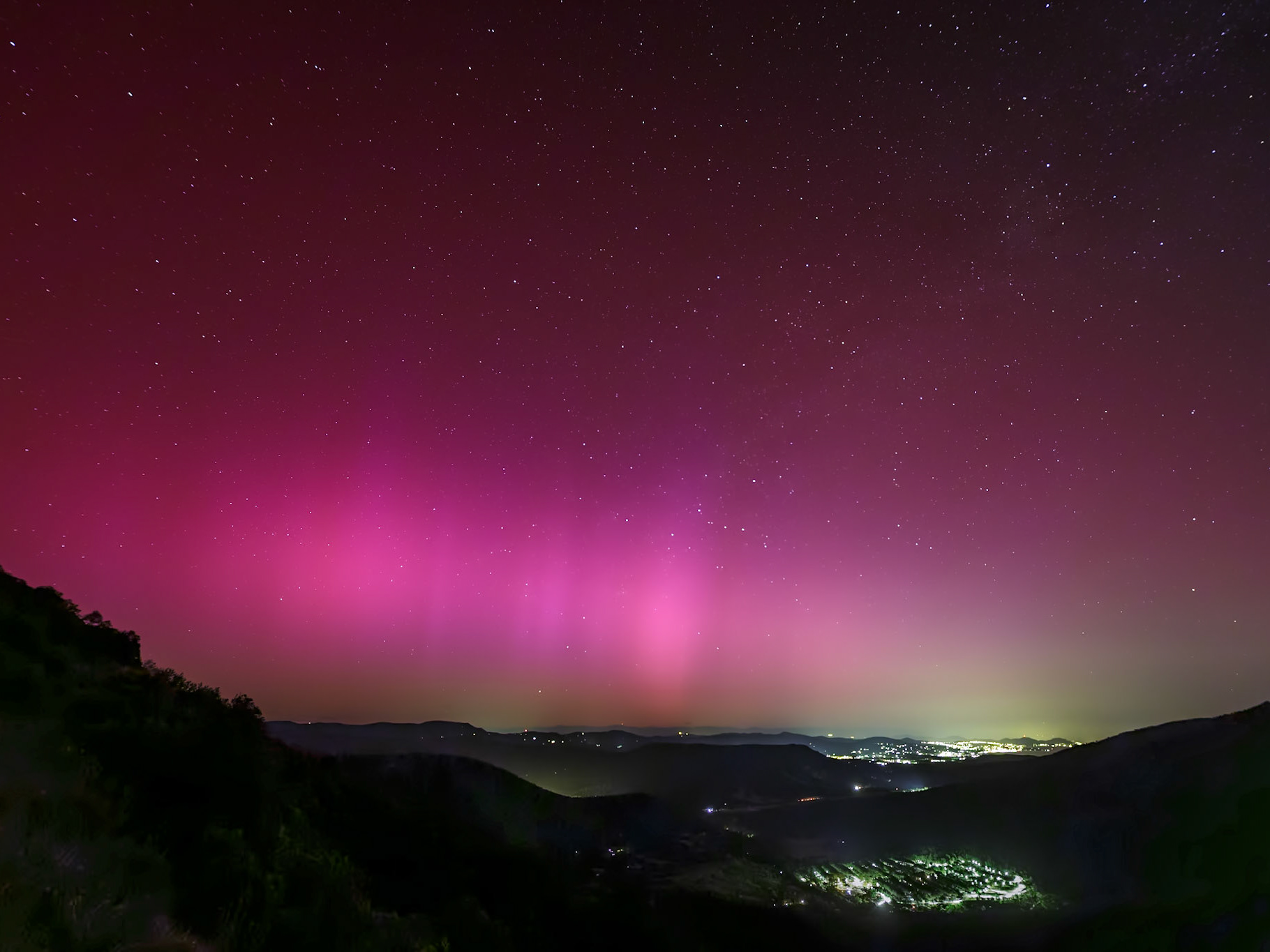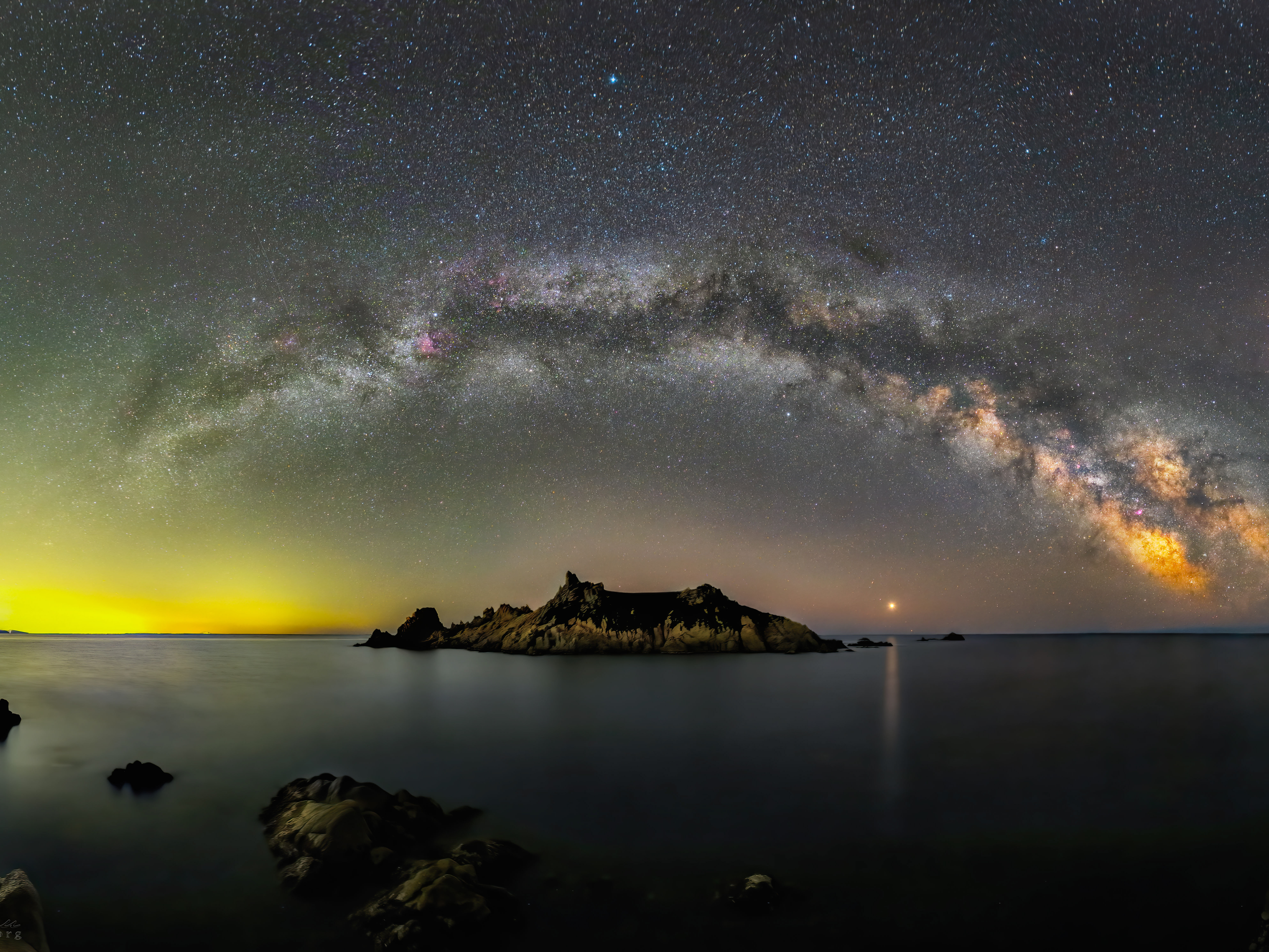The approach:
I hoped to capture the alignment of the different arches (SAR Arc, Aurora and Milky Way) on the same image. This ambitious photo project involved in particular having major auroral activity (first necessary for there to be a SAR arc). It then had to peak around 1:00 am so that the arc could be perfectly aligned with the Milky Way in its ideal position centered on the North.
With the experience of the previous auroral activity, I had spotted a pass in the Maures massif, an ideally located spot offering a clear view due north with very little light pollution in this direction. The objective was to achieve a panoramic view of the entire Milky Way arch with the auroral arc in the center.
Technical side:
To really bring out the Milky Way, I had considered using an equatorial mount allowing longer exposures and the use of filters to enhance the details of the nebulae. But the strong Mistral did not give me this option choice… I had to work with single and sufficiently short exposures to reduce the risk of vibrations, especially during the aurora. The wind calmed down later in the night, allowing me to capture a bit of Ha with the equatorial mount. To cover the entire field of the auroral spectacle, and highlight the alignment, I opted for a panorama made from an assembly of photos taken with one of my favorite lenses, the TTArtisan 11mm. This wide-field lens allows me to create a wide panorama of more than 180° quickly enough to maintain the continuity of the dance of the pillars of the aurora between each view. When assembling with the PTGUI Pro software, I opted for a Mercator projection and a square format that seemed perfectly suited to highlighting the alignment of the different arches.
On the natural phenomenon side:
Auroras are caused by the reaction of atmospheric gases with charged particles emitted during a coronal mass ejection by the sun. This ionized plasma is deflected by the Earth's magnetic field as it approaches, but a small part is brought back towards the poles and along the magnetic field lines.
The colors of the Aurora vary according to the altitude and the type of atmospheric gas that reacts with the solar plasma :
- Green: the most visible color in auroras - observed in high latitudes. It is due to the reaction of the plasma with oxygen molecules located between 100 and 200 km above sea level.
- Pink and red: emissions related to oxygen molecules located at high altitude, above 200 km,
- Dark red: At very high altitude (in the ionosphere), almost at the level of the orbit of the International Space Station (400 km), collisions of ionized plasma with oxygen atoms produce red auroras. It is also in this area that the SAR arc is formed during large geomagnetic storms, the mechanisms behind which are still poorly understood by scientists
.
************
📷 Canon 6D astromodified & Canon 80d
📸 TTArtisan 11mm f/2.8 & Sigma 40mm 1.4 Art
🔭️ Tripod Leofoto LS-364C
🔭️ Ioptron SkyGuider Pro
🌄 6 vertical pano | 10 sec | f/2.8 | ISO1600
🔎 Ha 12nm Astronomik MAX FR: ISO3200 20s x3 tracked stacked
🖥️ APP - PTGUI (mercator projection) - PS - PI (NoiseXt - StarXt) - LR
⚫ Bortle 4
📌 Moors massive
📆 2024/10/11
🕐 11:13 PM UTC
🌐 flobeau.photography (fb, insta, web)





